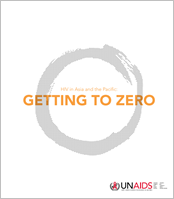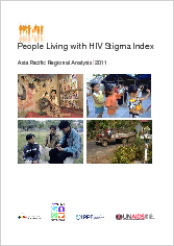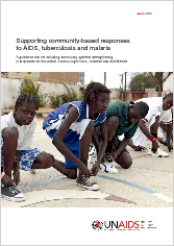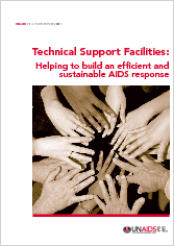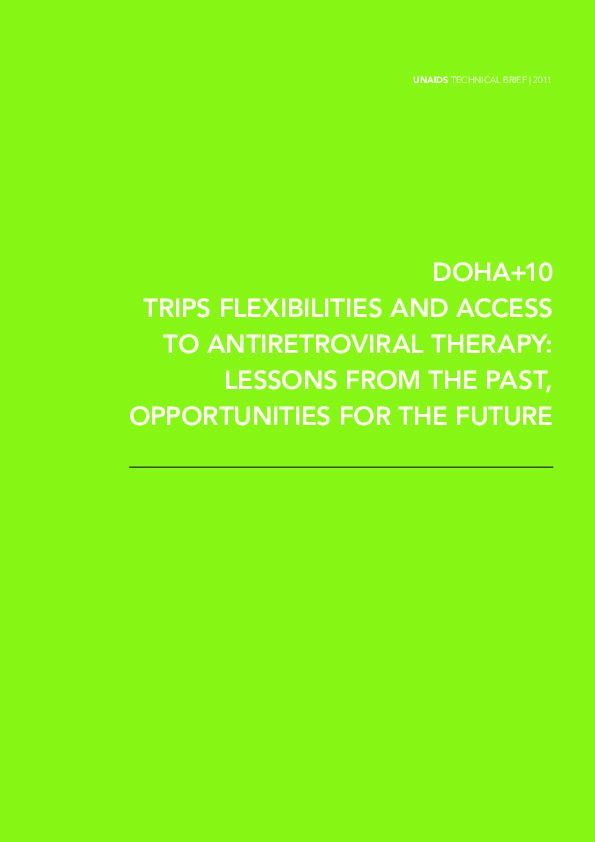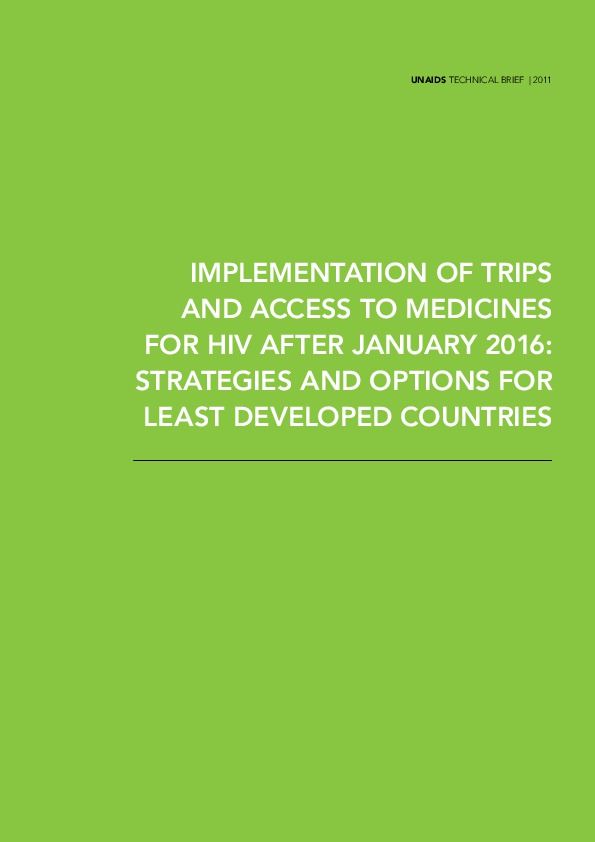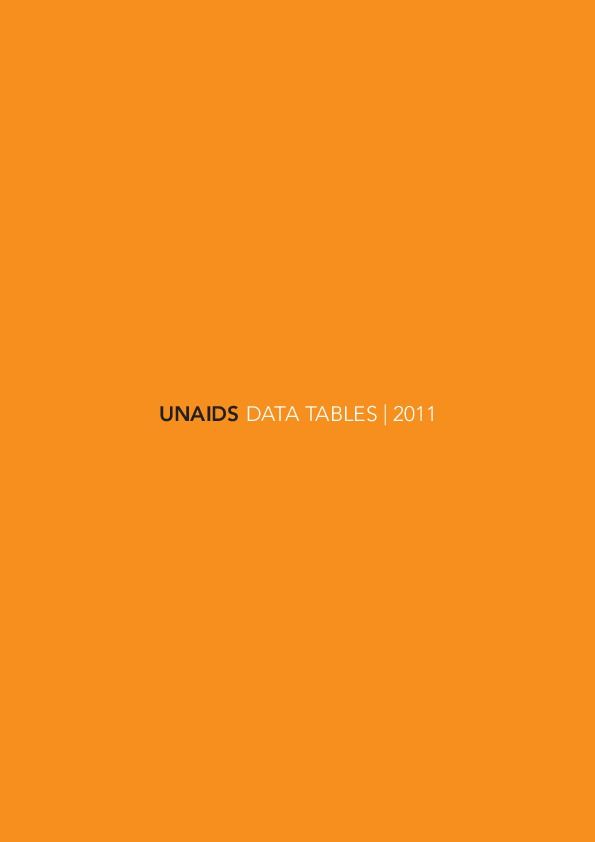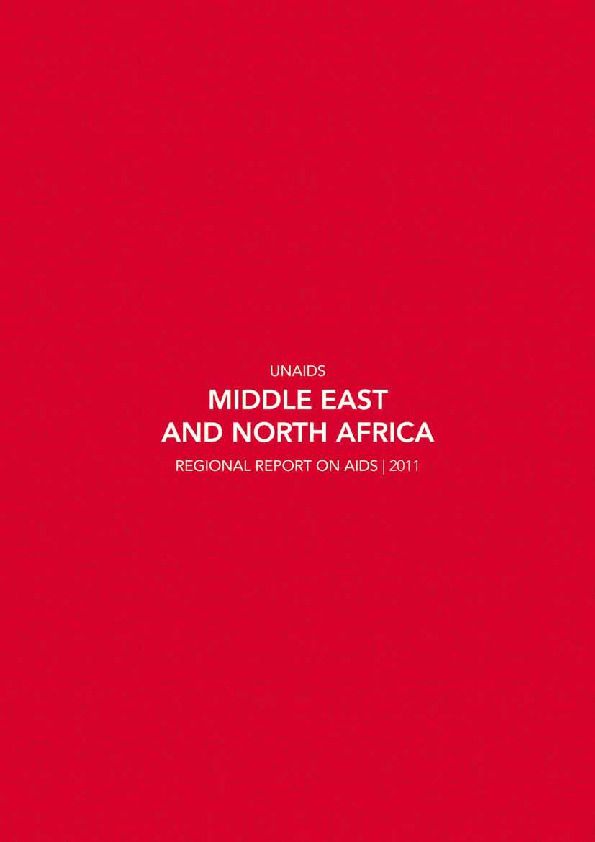Documents
HIV in Asia and the Pacific: Getting to zero
26 августаа 2011 года.
This report provides the most up to date information on the HIV epidemic in the region in 2011. While the region has seen impressive gains—including a 20% drop in new HIV infections since 2001 and a three-fold increase in access to antiretroviral therapy since 2006—progress is threatened by an inadequate focus on key populations at higher risk of HIV infection and insufficient funding from both domestic and international sources.
Documents
People Living with HIV Stigma Index: Asia Pacific Regional Analysis 2011
29 августаа 2011 года.
This report provides findings from the rollout of the People Living with HIV Stigma Index (PLHIV Stigma Index) in nine countries in Asia and the Pacific (Bangladesh, Cambodia, China, Fiji, Myanmar, Pakistan, Philippines, Sri Lanka, Thailand). It provides the first large-scale regional comparison of standardized human immunodeficiency virus (HIV)-related stigma indicators. The findings and interpretation represent an extraordinary effort by people living with HIV, organizations of people living with HIV, and supporting domestic and international agencies.
Documents
A guidance tool for including community systems strengthening in proposals for the Global Fund to Fight AIDS, Tuberculosis and Malaria
20 сентября 2011 года.
There is general agreement that strong community participation in the response to HIV, tuberculosis (TB) and malaria is essential to controlling these epidemics. In the AIDS response, community-based organizations (CBOs) and other NGOs have played a critical role. They have been key providers of prevention, treatment, care and support services and have worked to create the social, political, legal and financial environment needed to effectively respond to the epidemic
Documents
Technical Support Facilities: Helping to build an efficient and sustainable AIDS response
28 октября 2011 года.
This report highlights the role that the Technical Support Facilities (TSF) have played in Africa and Asia to strengthen countries capacities to fund, plan, manage and coordinate effective, larger scale HIV programs. Established by UNAIDS in 2005, the TSFs have provided support to over 70 countries through 50,000 days of technical assistance and capacity development.
Documents
DOHA+10 TRIPS flexibilities and access to antiretroviral therapy: lessons from the past, opportunities for the future
18 ноября 2011 года.
The transformation of HIV from almost certain death to a chronic condition for many people living with HIV in low- and middle-income countries is a significant public health achievement. By the end of 2010, 6.6 million people in low- and middle-income countries – 47% of the total number eligible – had access to antiretroviral therapy. This represents a dramatic increase from the 300,000 (2.7% of those eligible) on antiretroviral therapy in 2002.
Documents
Доклад ЮНЭЙДС Всемирный день борьбы со СПИДом – 2011
21 ноября 2011 года.
Новый доклад, опубликованный сегодня Объединенной программой Организации Объединенных Наций по ВИЧ/СПИДу (ЮНЭЙДС), указывает на то, что 2011 год явился поворотным моментом в противодействии СПИДу, продемонстрировав небывалый прогресс в области науки, политического лидерства и результатов. В докладе также показано, что число новых случаев ВИЧ-инфекции и смертей в связи со СПИДом достигло самого низкого уровня по сравнению с пиком развитии эпидемии.
Documents
Implementation of TRIPS and Access to Medicines for HIV after January 2016: Strategies and Options for Least Developed Countries
22 ноября 2011 года.
This document seeks to analyse how LDCs have utilized the 2016 extension to facilitate the production and access to HIV and other medicines for their populations; discuss what can be done to maximize the opportunities provided by the current extensions; describe the potential implications of LDCs having to implement the TRIPS Agreement with respect to pharmaceuticals and test data protection; fill the gaps in the understanding of the process for further extension of the transition period for pharmaceutical products; and provide recommendations on how LDCs should proceed to seek further extensions.
Documents
Global HIV/AIDS Response - Progress Report 2011
30 ноября 2011 года.
Documents
UNAIDS Data Tables 2011
02 декабря 2011 года.
The data tables describe in greater detail the progress being made against the HIV epidemic and the main challenges to achieving zero HIV infections and zero AIDS deaths. The data are drawn from country progress reports and will be updated regularly. This document reflects information found in the publication ‘Global HIV/AIDS response: epidemic update and health sector progress towards universal access: progress report 2011’, by UNAIDS, UNICEF and WHO.
Documents
Middle East and North Africa - Regional Report on AIDS: 2011
04 декабря 2011 года.
In the Middle East and North Africa (MENA) region, the HIV epidemic has been on the rise since 2001. Although the overall HIV prevalence in the region is still low, the rise in new infections has put MENA among the top two regions in the world with the fastest growing HIV epidemic. The rise in the estimated number of people living with HIV in the region presumably is the result of an increased HIV prevalence among key populations at higher risk and a forward transmission of the virus to a larger number of individuals who are generally at lower risk of infection.

